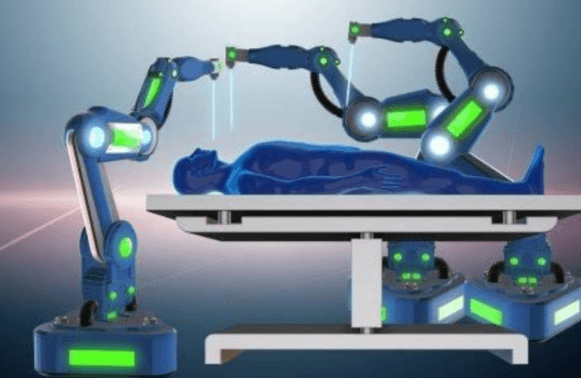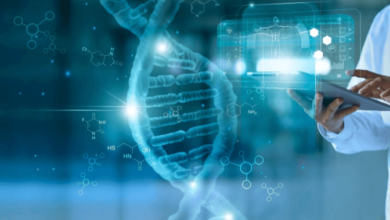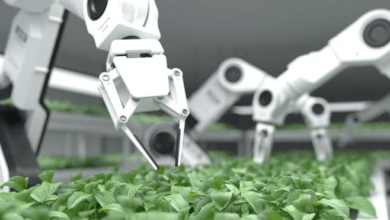How are advancements in robotics transforming industries like manufacturing, healthcare, and agriculture?

Introduction
Advancements in robotics are reshaping various industries, driving efficiency, precision, and innovation. Manufacturing, healthcare, and agriculture are three sectors experiencing significant transformations due to robotic technology. This article explores how these advancements are influencing each sector, improving productivity, and enhancing outcomes.
The Evolution of Robotics in Manufacturing
Robotics has long been integral to manufacturing, automating repetitive tasks and enhancing production lines. Modern advancements have taken this integration to new heights, enabling more sophisticated and versatile applications.
Automation and Assembly Line Efficiency
Robotic automation has revolutionized assembly lines by increasing speed and precision. Robots can perform repetitive tasks with consistent accuracy, reducing human error and production time. This efficiency leads to higher output and lower costs.
Quality Control and Inspection
Advanced robotics equipped with AI and machine vision can inspect products with unparalleled accuracy. These robots detect defects that might be missed by human inspectors, ensuring higher quality standards and reducing waste.
Collaborative Robots (Cobots)
Cobots are designed to work alongside human workers, enhancing productivity and safety. These robots can handle tasks that are dangerous or monotonous, allowing human workers to focus on more complex and creative aspects of manufacturing.
Robotics in Healthcare: Revolutionizing Patient Care
The healthcare industry is undergoing a transformation with the integration of robotics, from surgery to patient care. These advancements are improving outcomes, reducing recovery times, and enhancing the overall patient experience.
Surgical Robots
Robotic surgery offers precision that surpasses human capabilities. Surgeons use robotic systems to perform minimally invasive procedures, which result in smaller incisions, less pain, and quicker recovery times for patients.
Rehabilitation and Therapy
Robotic devices are used in physical therapy to assist patients with mobility issues. These robots provide consistent, controlled movements that help in rehabilitation, offering personalized therapy that adjusts to the patient’s progress.
Patient Care and Assistance
Robots are increasingly used to assist with patient care tasks, such as monitoring vital signs, dispensing medication, and providing companionship. These robots help in reducing the workload on healthcare professionals and improving patient comfort and safety.
Agricultural Robotics: Enhancing Productivity and Sustainability
In agriculture, robotics is driving significant changes, addressing challenges related to labor shortages, efficiency, and sustainability. These innovations are critical for meeting the growing food demands of the global population.
Precision Farming
Robotic systems equipped with sensors and AI analyze soil conditions, crop health, and weather patterns. This data enables precise application of water, fertilizers, and pesticides, enhancing crop yield and reducing environmental impact.
Harvesting and Picking
Robots designed for harvesting can work around the clock, increasing productivity and reducing the reliance on seasonal labor. These robots use advanced sensors and algorithms to identify ripe produce, ensuring optimal quality.
Autonomous Tractors and Drones
Autonomous tractors and drones are transforming farming operations. Tractors equipped with GPS and AI can plow, plant, and harvest crops with minimal human intervention, while drones monitor crop health and manage pests efficiently.
The Role of Artificial Intelligence in Robotics
AI is a driving force behind the advancements in robotics, enabling machines to learn, adapt, and make decisions. The integration of AI enhances the capabilities of robots, making them more effective and versatile in various industries.
Machine Learning and Predictive Maintenance
AI-powered robots use machine learning to predict maintenance needs, reducing downtime and extending the lifespan of machinery. Predictive maintenance helps in identifying potential issues before they become critical, ensuring smooth operations.
Natural Language Processing
Robots equipped with natural language processing can understand and respond to human commands, enhancing their usability in customer service, healthcare, and other interactive roles. This capability makes robots more accessible and easier to integrate into daily tasks.
Challenges and Future Prospects
While advancements in robotics offer numerous benefits, they also present challenges that need to be addressed. Issues such as job displacement, ethical considerations, and the need for regulatory frameworks are critical for the future development of robotics.
Ethical and Social Implications
The integration of robots into various industries raises ethical questions about job displacement and the impact on the workforce. It’s essential to balance technological advancements with strategies to retrain workers and create new job opportunities.
Regulatory and Safety Standards
As robotics technology evolves, establishing regulatory standards and safety protocols is crucial. Ensuring that robots operate safely and ethically protects both workers and consumers, fostering trust in robotic systems.
Continued Innovation and Research
Ongoing research and development are vital for the future of robotics. Innovations in materials, AI, and machine learning will continue to expand the capabilities of robots, opening new possibilities in various industries.
FAQs
How do robots improve efficiency in manufacturing?
Robots enhance efficiency in manufacturing by automating repetitive tasks, reducing human error, and increasing production speed. They also improve quality control through precise inspections.
What are the benefits of robotic surgery?
Robotic surgery offers benefits such as smaller incisions, reduced pain, quicker recovery times, and enhanced precision, resulting in better patient outcomes.
How do agricultural robots contribute to sustainability?
Agricultural robots contribute to sustainability by optimizing the use of water, fertilizers, and pesticides, reducing waste, and improving crop yield. They also reduce the reliance on seasonal labor.
What is the role of AI in robotics?
AI enables robots to learn, adapt, and make decisions. It enhances capabilities such as predictive maintenance, natural language processing, and machine learning, making robots more effective and versatile.
What challenges do robotics advancements present?
Challenges include job displacement, ethical considerations, and the need for regulatory frameworks. Addressing these issues is crucial for the responsible development and integration of robotics.
How are cobots different from traditional industrial robots?
Cobots, or collaborative robots, are designed to work alongside humans, enhancing productivity and safety. Unlike traditional industrial robots, cobots can handle tasks that require interaction with human workers.
Conclusion
Advancements in robotics are transforming industries like manufacturing, healthcare, and agriculture, driving efficiency, precision, and innovation. While challenges exist, the potential benefits of robotics in improving productivity, quality, and sustainability are immense. As technology continues to evolve, the integration of robotics across various sectors will undoubtedly shape the future of industry and society.




